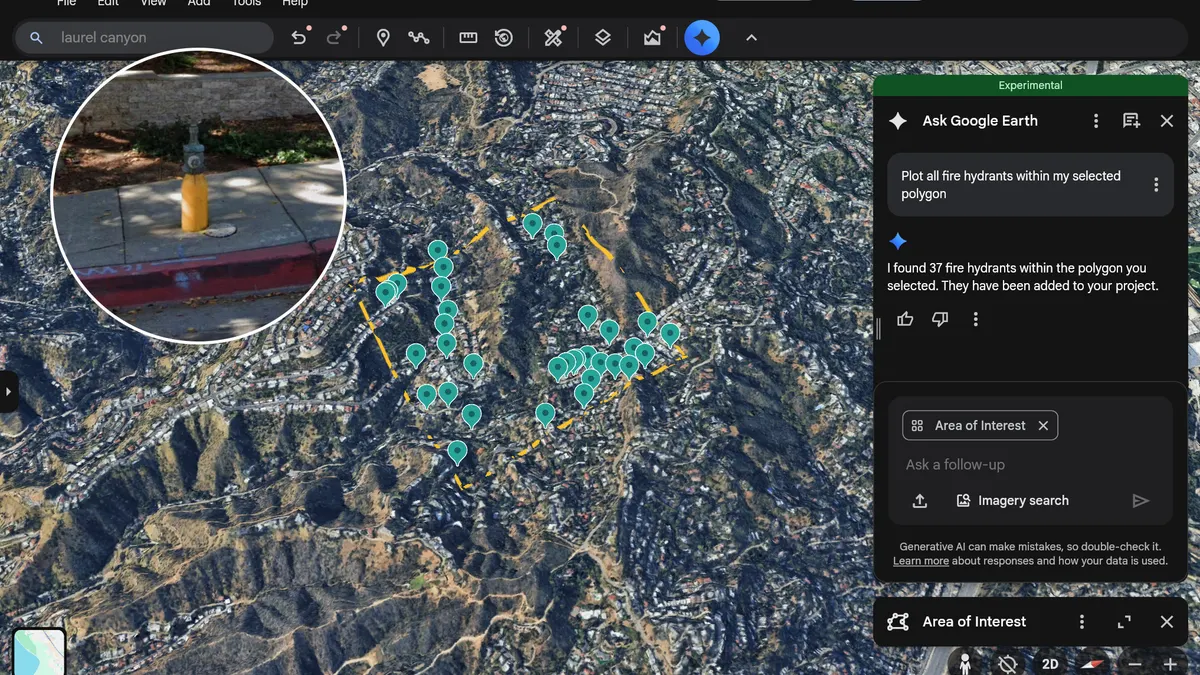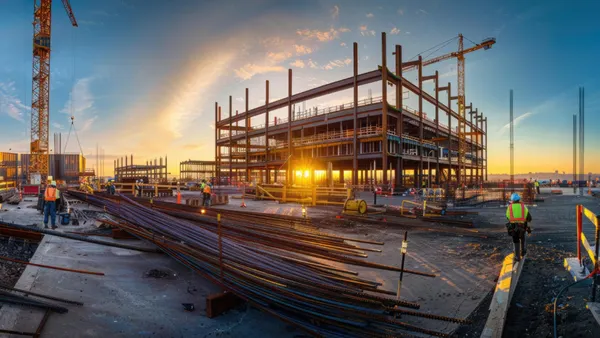As a new wave of supertall skyscrapers tops out at increasingly dizzying heights, the business of moving thousands of people a day more than a half mile into the sky (and back down again) is relying on newly developing elevator technologies and systems. Cable materials science, magnetic levitation technology and dispatch software systems are allowing for lighter and faster elevators that optimize travel time with minimal mechanical space.
With sector innovation continuing to advance, Construction Dive checked in with elevator company KONE's senior vice president of new equipment business, Aaron Ites, and director of major projects, Steve Gonzalez, to discuss horizontal axis movement, supertalls approaching the mile-high mark and how fast is too fast for elevator riders to comfortably withstand.
Editor's note: This interview has been edited and condensed for clarity.
The KONE team is working on elevator systems for the 3,307 foot-tall Jeddah Tower, which will be the tallest building in the world when completed in 2020. What are the new technologies at work in some of these supertall skyscrapers, and how do they inform elevator trends in the much larger volume of mid-rise and normal high-rise construction?
GONZALEZ: If we look at our operations globally we have a very balanced business between new construction and replacement and modernization projects. It’s great to be involved with the tallest building in the world, and we are doing lots of supertall work in China, too. But mid-rise is a large portion of our business, and we do plenty of one-stop and two-stop systems as well. Application of technology depends on the type of buildings and what the customer is looking for in terms of how they want people to move once construction is complete.
In September, Hitachi was recognized for running the fastest elevators in the world at China’s Guangzhou CTF Finance Centre. Over 60,000 runs, the system achieved sustained speeds of 65 feet per second. Is speed just a supertall thing, or is it informing technology developments across a range of building types?
ITES: Believe it or not, speed as a measure of how fast the elevator travels is not such an exciting topic. More important is the time savings that can be gained in how efficiently you can get passengers in and out of elevators at the right time, so guidance and destination dispatch technology is continuing to get more attention than speed per se. Everyone is so used to a great user experience — whether that is a phone or a computer or an appliance — and you are seeing that going into the elevator with display panels and guidance packages that take things beyond where they have been. That’s what we see our customers getting excited about.
When it comes to construction, is elimination of elevator mechanical space still a primary goal of building designers and developers?
ITES: Yes. If you see a building with an elevator penthouse on the roof, you can date it to about 30 years or older. Elimination of the machine room began in earnest about 20 years ago, and KONE was a key player in locating traction machinery in smaller spaces and creating systems that are much more efficient from an energy standpoint. When you eliminate a hydraulic elevator as the hoisting mechanism for everything between a two-story and 100-story building, you achieve 50% to 60% in energy savings. There are thousands of traction elevators installed now, and legacy technology is becoming obsolete.
Wasn’t energy efficiency also a big driver in the development of carbon fiber materials technology for ropes and cables?
GONZALEZ: Carbon fiber is nothing new. It has been used in all sorts of industries, but it hasn’t been used for suspension and travel of elevators until very recently. The impact of replacing steel cables is that you significantly reduce the overall weight and energy required to move the elevator. Once you get to 70-80 floors, the steel ropes are so heavy they are close to needing ropes to suspend the ropes. It becomes a limiting factor. Carbon fiber reduces that weight by 80%, and suddenly all sorts of things happen — you can move the cars faster and farther than ever before. As a result, it eliminates the need for sky lobbies and separate hoist ways. The technology saves energy, material, square footage and time.
So speed is important, after all?
GONZALEZ: It’s not that it’s not important, its simply no longer an issue. Elevator technology has moved from limitations of physics to physiological limitations. Really the only limit is how fast and how far can I move a person before the pressure and altitude change becomes uncomfortable. Those are the new frontiers we have to deal with. Rider comfort is critical. You are not going into a building to ride an elevator at all. If you could just transport yourself from floor one to floor 100 you would do that. We are striving for the machinery and the technology to become as transparent as possible to users in all phases of the projects, so vertical transportation become a non-event. Passengers are thinking about all kinds of other things. They are fundamentally there to do something else, and the elevator is simply an enabler for that process.
You mention applied technology for users in all phases of the projects. What are some of the leading technologies being used in the design and construction of elevator systems?
GONZALEZ: We look to integrate technology into anything we can do to better assist the overall construction process with the builder. Schedule compression, cost reduction and anything you can push back further into the design process and integrate with BIM is impactful. When things are digital, fixes are easy. When things are physical, fixes are hard and costly. So what we can accomplish in the design phase is an overarching target we strive to improve upon.
ITES: When it comes to VR and reality capture, the area where we are excited is in pre-design to determine how we can model traffic flow inside the building. We’re also installing sensors in real-world applications including airports to look at macro traffic modeling and come up with more efficient ways of moving people through a building.
Speaking of moving people efficiently through a building, maglev technology promises to make cable-less and horizontal movement elevators a reality. Thyssenkrupp has completed a testing tower in Germany and says it will demo the technology this year. Are you working on maglev, and how long will it take for two-axis travel to be installed in a real-world setting?
GONZALEZ: The short answer is that as an industry, we don’t know how long it is going to take. This is another one of these things where the technology behind the idea isn’t necessarily new. As an industry we have been constantly revisiting the technology and its possible applications to see when they make sense. Some people think now is the right time, but two-axis travel is an extremely complex concept. You need to allow for new spaces, perhaps even a floor between floors if you are going to have horizontal hoist ways for a secondary path of travel. You can rethink how the building is laid out, but how do you re-engineer passenger behavior? The end user’s way of thinking needs to be significantly adjusted in order to have this be meaningful, otherwise it ends up simply being a novelty, an amusement park ride.


















